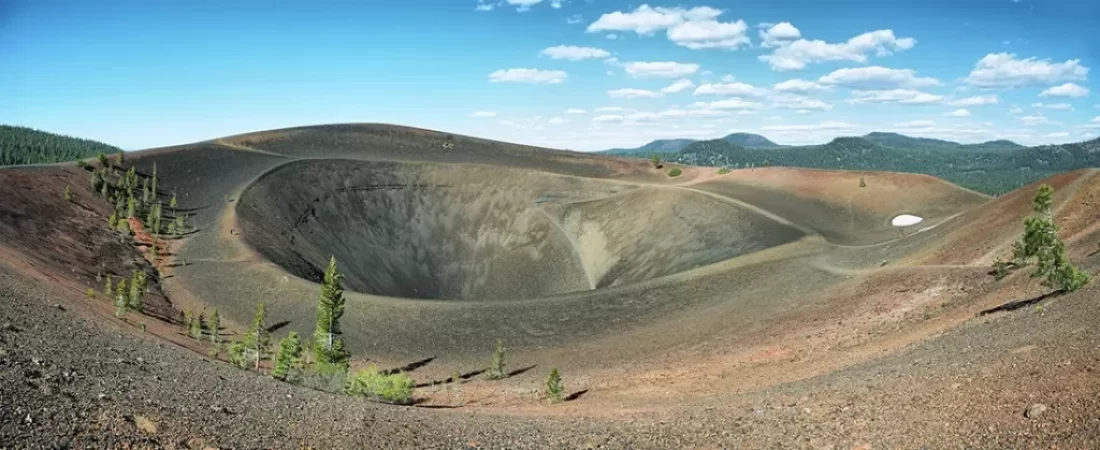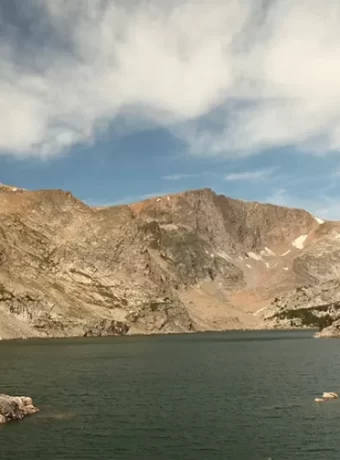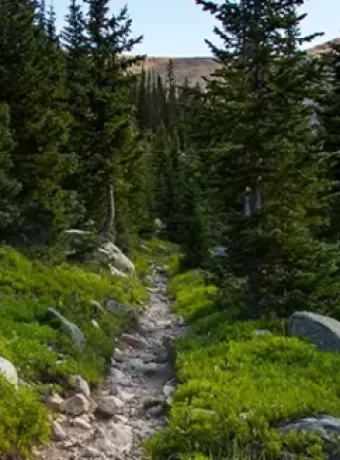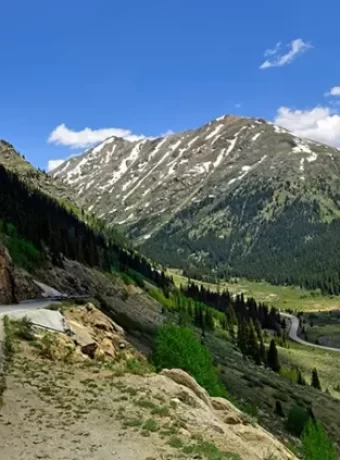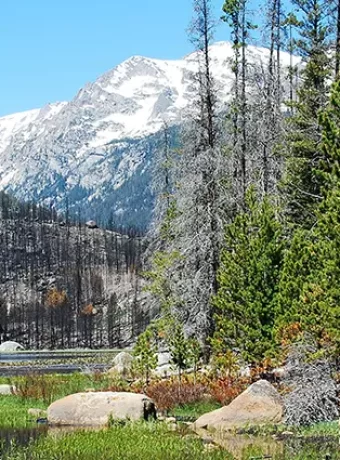Lassen Volcanic National Park: A History of Fire, Ice, and Adventure
So, you’re eyeing a trip to Lassen Volcanic National Park? Smart move. This isn’t your average national park—it’s like nature threw a party and invited volcanoes, lakes, and a bunch of cool trails. Picture this: bubbling mud pots, a sleeping giant of a volcano (Lassen Peak, the world’s largest plug dome volcano), and enough wilderness to make you forget your Wi-Fi password. In this guide, we’re covering the park’s explosive past, the best hikes to strut your stuff on, a backpacking trip that’ll make you feel like a pro, camping tips (spoiler: avoid the steam vents), and fly fishing spots with flies that’ll trick even the sneakiest trout. Grab a snack—this is gonna be fun!
Table of Contents
A Brief (But Explosive) History of Lassen Volcanic National Park
Let’s kick things off with some history—don’t worry, I won’t bore you with a textbook vibe. Lassen Volcanic National Park is all about Lassen Peak, a massive plug dome volcano that decided to throw a tantrum on May 22, 1915. That eruption was the big one—ash flew 280 miles, rocks rained down, and the whole area looked like a disaster movie set. It was so epic that the U.S. said, “Yep, we’re making this a national park,” and boom, it was official in 1916. The goal? Protect this volcanic wonderland for folks like us to explore.
Here’s the wild part: Lassen Peak is still active. It’s not dead—just taking a long nap. So, while you’re wandering around, just know the ground could, theoretically, get feisty again. No biggie, right? The park’s name comes from Peter Lassen, a Danish blacksmith who settled nearby in the 1800s. Poor guy probably didn’t realize he was neighbors with a lava-spewing beast, but that’s frontier life for you.
Before all that, Native American tribes like the Atsugewi, Yana, Yahi, and Maidu called this area home, living off the land long before volcanoes became tourist attractions. Fast forward to today, and Lassen’s 106,000 acres are a playground for anyone who loves nature with a side of geothermal sass.
Best Hiking Trails: From “Easy Peasy” to “Why Am I Doing This?”
Lassen Volcanic National Park boasts an extensive network of over 150 miles of hiking trails, catering to a wide range of abilities and interests. From leisurely lakeside walks to challenging mountain ascents, there is a trail for everyone. Exploring these paths is one of the best ways to experience the park’s diverse ecosystems and stunning scenery.
Checking current conditions before any hike is important, as weather can change rapidly and some trails may have seasonal closures. The National Park Service provides up-to-date information on its official website. Proper preparation, including water, snacks, and appropriate gear, makes for a safer and more enjoyable experience on any trail Lassen offers. Whether you’re a “let’s take a stroll” type or a “challenge accepted” warrior. Let’s break it down by difficulty, because not all of us are ready to summit a volcano (yet).
Easy Hikes: For When You Just Want to Chill
Perfect for families, beginners, or anyone who’d rather sip coffee than chug electrolytes.
-
Manzanita Lake Loop (2 miles, 1 hour)
This is less “hike” and more “scenic saunter.” You’ll circle Manzanita Lake with postcard-worthy views of Lassen Peak and Chaos Crags. Ducks and geese might photobomb your selfies, and if you’re lucky, an otter might pop up to say hi. Don’t feed the critters, though—they’re not your pets.
The Manzanita Lake Trail offers a gentle and scenic 1.8-mile loop around the picturesque Manzanita Lake. This mostly flat, accessible trail provides stunning reflections of Lassen Peak in the clear mountain waters, especially in the calm morning or late afternoon light. It’s an excellent choice for families, photographers, and those looking for a relaxing walk amidst beautiful scenery.
Wildlife, including waterfowl, deer, and occasionally beavers, can often be spotted along the Manzanita Lake Trail. The area also features educational exhibits about the park’s natural and cultural history. This trail is typically open year-round, though snow may cover it in winter, offering opportunities for snowshoeing.
-
Reflection Lake Trail (0.6 miles, 30 minutes)
Short, sweet, and stunning. This flat trail takes you past Reflection Lake and a lily pond, surrounded by wildflowers and trees. You might spot a woodpecker or a deer—just don’t expect them to pose for pics. It’s like nature’s chill pill. -
Devastated Area Interpretive Trail (0.5 miles, 30 minutes)
This quick loop shows off the aftermath of the 1915 eruption, complete with signs explaining the chaos. It’s a history lesson with fresh air and zero pop quizzes. Perfect for a “look how tough nature is” moment.
Moderate Hikes: For When You Want to Feel the Burn (But Not Too Much)
These trails step it up a notch—great for a solid workout without crying uncle.
-
Bumpass Hell (3 miles, 2 hours)
First off, the name—named after Kendall Bumpass, who took a hot mud bath the hard way (burned his leg, oof). This hike’s a must-do: a boardwalk winds through the park’s biggest hydrothermal spot, with steaming vents and turquoise pools. It’s like Yellowstone’s quirky little sibling. Smells like rotten eggs, looks like a sci-fi set.
The Bumpass Hell Trail is a popular 3-mile round-trip hike leading to the park’s largest and most dynamic hydrothermal area. Visitors traverse well-maintained boardwalks over a landscape filled with bubbling mud pots, hissing fumaroles, and pools of vibrant, mineral-rich water. The strong scent of sulfur and the visual spectacle of steam rising from the earth make this a memorable experience.
This trail is generally moderate in difficulty with some elevation change. It is usually accessible from early summer to mid-fall, depending on snow conditions. Staying on the designated paths is crucial for safety due to the high ground temperatures and unstable terrain surrounding the hydrothermal features.
-
Kings Creek Falls (3 miles, 2 hours)
Meadows, forests, and a waterfall payoff—this trail’s got it all. There’s some climbing, but the cascading water at the end makes it worth it. Watch your step near the falls—slippery rocks and YouTube fame don’t mix. -
Terrace, Shadow & Cliff Lakes (3.3 miles, 2-3 hours)
Three lakes, one hike. It’s like a nature BOGO deal! Shady trails lead to these alpine beauties, perfect for a picnic or a dip if you’re brave enough to handle the chill. Pack a sandwich—you’ll want to linger.
Difficult Hikes: For When You’re Ready to Brag
These are the big leagues. Bring water, grit, and maybe a victory dance.
-
Lassen Peak (5 miles, 4-5 hours)
The main event! This steep climb to the summit is no joke—switchbacks, no shade, and a real altitude kick. But the 360-degree views? Insane. You’ll see half of California (okay, maybe not, but it feels like it). Hydrate or hate it.
For those seeking a strenuous challenge and unparalleled views, the Lassen Peak Trail is a must-do. This 5-mile round-trip hike ascends to the summit of Lassen Peak, one of the largest plug dome volcanoes in the world, at an elevation of 10,457 feet. The panoramic vistas from the top encompass the entire park, the surrounding Cascade Range, and on clear days, even views stretching towards the Sierra Nevada.
The trail is steep and rocky, gaining about 2,000 feet in elevation. Altitude can affect hikers, so pacing and hydration are important. The hiking season for Lassen Peak is typically from July to September, after the snow has melted sufficiently from the trail.
-
Brokeoff Mountain (7.6 miles, 4-6 hours)
Want Lassen Peak views without climbing it? This is your guy. It’s longer and tougher, but the panorama is chef’s kiss-level good. Pack snacks—you’ll burn calories like a champ.
The Best Backpacking Trip: Summit Lake to Cluster and Twin Lakes Loop
Backpackers, listen up—this one’s a gem. The Summit Lake to Cluster and Twin Lakes Loop is 10.6 miles of pure wilderness magic, with 1,469 feet of elevation gain. Here’s the scoop:
- Trail Rundown
Start at Summit Lake, weave through meadows and forests, hit Cluster Lakes, and camp at Twin Lakes. It’s moderate but feels like a breeze with all the eye candy—wildflowers, sparkling water, the works. You’ll be snapping pics like a pro. - Camping Vibes
You’ll need a wilderness permit (grab it online or at a ranger station) and bear-resistant containers. Bears are around, but they’re more “boo!” than “bite.” Twin Lakes has flat spots galore for your tent, with views that’ll make you forget your phone exists. Hang your food or use a canister—don’t tempt fate. - What to Watch For
The trail’s clear, but weather can flip fast—pack layers. Summer mosquitoes are tiny vampires, so bug spray’s your BFF. First-timers, this is your sweet spot: not too brutal, tons of rewards. - Hot Tip
Swim in Twin Lakes if you dare—it’s cold but refreshing. And follow Leave No Trace—don’t be the jerk who leaves wrappers behind.
Camping Under the Stars
Lassen Volcanic National Park offers eight developed park campgrounds, providing over 450 sites for various camping experiences. From well-equipped sites suitable for RVs to more rustic settings for tent campers, options abound for overnight stays. Immersing oneself in the park by camping is an excellent way to connect with its natural rhythms and enjoy its nocturnal wonders.
Reservations are highly recommended, especially for popular campgrounds and during the peak summer season (typically June to September). Many sites can be booked in advance through the National Park Service reservation system. Always adhere to Leave No Trace principles to protect the park’s fragile environment for future generations.
Here’s a look at some popular campgrounds:
- Manzanita Lake Campground: Situated near the park’s north entrance, this large campground offers proximity to Manzanita Lake, excellent views of Lassen Peak, and access to several hiking trails, including the Manzanita Lake Trail. It has amenities like flush toilets, potable water, and a camp store.
- Summit Lake Campground: Located at a higher elevation along the main park road, Summit Lake offers North and South Summit Lake campgrounds. These sites provide a cooler summer camping experience and access to swimming and non-motorized boating on Summit Lake.
- Butte Lake Campground: Found in the quieter northeast corner of the park, this campground is ideal for those seeking a more remote experience. It’s a great base for exploring Cinder Cone, the Fantastic Lava Beds, and fishing or kayaking on Butte Lake.
- Juniper Lake Campground: This rustic campground on the eastern shore of Juniper Lake offers a primitive camping experience. Access is via a rough, unpaved road, making it suitable for those with high-clearance vehicles.
- Warner Valley Campground: Located in a picturesque valley, this campground provides access to Drakesbad Guest Ranch (check for operational status) and trails leading to hydrothermal features like Boiling Springs Lake and Terminal Geyser.
- Southwest Walk-in Campground: Near the Kohm Yah-mah-nee Visitor Center, this campground offers tent-only sites a short walk from the parking area, providing a convenient option for those arriving without reservations or wanting to be close to the visitor center.
- Lost Creek Group Campground: Designed for larger groups, the Lost Creek Group Campground offers several sites that can accommodate between 10 and 25 people. Reservations are required for this popular group camping area.
Many Lassen Volcanic National Park campgrounds fill up quickly, so planning ahead is wise. Some sites are first-come, first-served, but these are often claimed early in the day during busy periods. Always check the official website for the most current information on campground status, amenities, and reservation procedures.
Winter Wonderland
During the winter months, Lassen Volcanic National Park transforms into a serene, snowy landscape, offering a different kind of beauty and recreational opportunities. The park becomes a haven for snowshoeing, cross-country skiing, and winter camping for the well-prepared. The main park road, Lassen Volcanic National Park Highway, closes to through traffic due to heavy snowfall, typically from November to May or June.
The Southwest Area, near the Kohm Yah-mah-nee Visitor Center, remains accessible by vehicle and serves as the primary hub for winter activities. Here, visitors can enjoy ranger-led snowshoe walks on weekends (when available), explore marked snowshoe trails, or go sledding. The sight of steaming fumaroles and hydrothermal areas like Sulphur Works amidst a blanket of snow is a truly captivating experience.
Before venturing into the park during winter, it is essential to check current conditions, road closures, and weather forecasts. Winter travel in mountainous terrain requires preparation, appropriate gear (including layers, waterproof clothing, and traction devices for footwear or tires), and an awareness of avalanche conditions if venturing into backcountry areas. The Lassen Park ski area, though no longer operating lifts, still provides backcountry ski terrain for experienced individuals.
I love woolly buggers, they a go to pattern more offend then not, with pheasant tails, Baetis nymphs. A nine foot-six weight fly rod is a great travel rod, while covering all your need fly fishing Lassen Volcanic National Park.

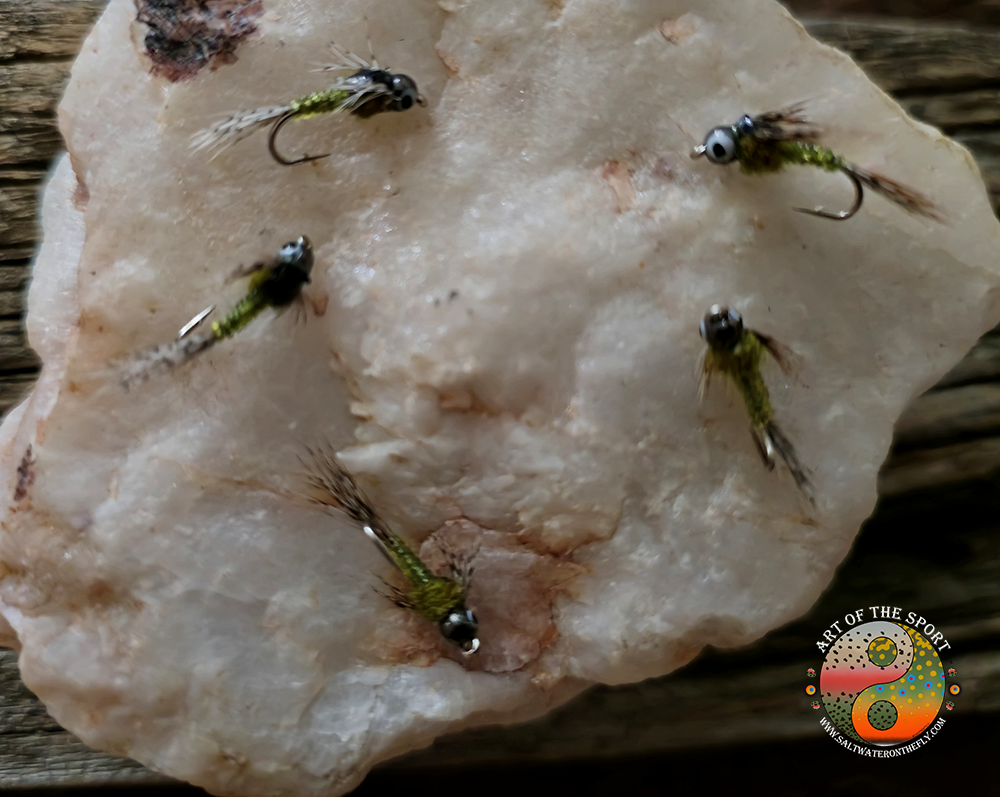
Fly Fishing in Lassen: Where to Cast and What Flies to Use
Anglers, Lassen’s got trout-filled waters waiting. It’s chill, scenic, and perfect for pretending you’re in a fly fishing movie. Lassen Volcanic National Park offers some sweet spots to try your luck.
Top Spots
- Manzanita Lake: Rainbow, brown, and brook trout galore. Catch-and-release only, so no fish fry tonight. The views of Lassen Peak make it even better.
- Butte Lake: Another solid pick, especially if you’re camped nearby. It’s great for combining camping and fly fishing.
- Backcountry lakes: These are a bonus for the brave. Bring a map! You might find some untouched fishing spots.
Flies That Work
Choosing the right fly is key. Here are some to try:
- Rainbow trout? Use a Woolly Bugger or Pheasant Tail Nymph. These flies imitate the bugs they love to eat.
- Brown trout? Royal Wulff or Elk Hair Caddis are good choices. These float well and look tasty.
- Brookies? Try Adams or Blue Wing Olive. These are classic flies that work almost anywhere.
Mix it up. Fish are picky sometimes. Don’t be afraid to experiment to see what they’re biting. Make sure and check the rules, but I am a two fly type of fly fisher. I’ve been known where legal to fish with three flies, but you have to be a good caster and hardly any wind.
Rules of the Game
Make sure you have a California fishing license. Also, check the park regulations online. Most spots are catch-and-release, so be nice to the fish. They’re just vibing in Lassen Volcanic National Park. Remember Leave No Trace principles. Respect the area, and leave it as you found it. Fly fishing is more fun when the area stays pristine. It’s full of surprises. Even if you don’t catch anything, the scenery and experience are worth it. Just being in Lassen Volcanic National Park is a win.
Wildlife Watching
Lassen Volcanic National Park is a sanctuary for a diverse array of wildlife, adapted to its varied habitats ranging from forests and meadows freckled with wildflowers to alpine fellfields and clear mountain lakes. Observant visitors may spot mule deer, black bears, American pikas, golden-mantled ground squirrels, and various bird species. The park’s location at the crossroads of the Cascade Range, Sierra Nevada, and Great Basin ecoregions contributes to its rich biodiversity.
Water bodies like Manzanita Lake, Summit Lake, and Hat Creek are home to trout, attracting anglers. Birdwatchers can look for Clark’s nutcrackers, Steller’s jays, mountain chickadees, and ospreys. Remember to maintain a safe and respectful distance from all wildlife and never feed animals; this protects their natural behaviors and ensures safety for both animals and people. Proper food storage is crucial in bear country, using provided bear lockers at campgrounds and trailheads.
Stargazing in Lassen
With its high elevation, clean air, and minimal light pollution, Lassen Volcanic National Park offers exceptional stargazing opportunities. On clear, moonless nights, the Milky Way galaxy can be seen stretching across the sky in breathtaking detail. The park’s commitment to preserving natural darkness enhances this experience, making it a prime location for astronomy enthusiasts and anyone wishing to connect with the cosmos.
The National Park Service sometimes hosts astronomy programs and Dark Sky Festivals during the summer months, often led by park rangers or guest astronomers. These events provide telescopes for public viewing and educational talks about celestial objects. Even without organized programs, finding a dark spot away from campground lights, such as at the Devastated Area or around Summit Lake, can yield incredible views of stars, planets, and meteor showers when active.
Best Time to Visit
The optimal time to visit Lassen Volcanic National Park largely depends on your interests and desired activities. Summer (June through September) is the most popular season, offering warm temperatures, generally clear skies, and full access to park roads, trails, and facilities, including all volcanic national park campgrounds. This is the prime time for hiking to higher elevations like Lassen Peak, extensive trail exploration, and camping.
Spring (April to May) is a period of transition, with snow gradually melting at lower elevations, revealing wildflowers in meadows freckled with new growth. Higher elevation areas and much of the Lassen Park Highway usually remain closed until late May or June. Fall (October to November) brings cooler temperatures, fewer crowds, and often beautiful autumn colors, particularly in aspen groves. However, early snowstorms can occur, potentially leading to road and facility closures, so checking current conditions is vital.
Winter (December to March) provides a unique, quiet experience focused on snow-based activities in the Southwest Area. Access is limited, but the snowy landscapes offer stunning beauty. The National Park Service frequently posts news releases and updates on its official website regarding seasonal access and climate change impacts on the park.
Getting There and Around
Lassen Volcanic National Park is situated in northeastern California, approximately 50 miles east of Redding and about a three-hour drive from Sacramento or Reno, Nevada. The park has two primary entrances: the northwest entrance near Manzanita Lake (accessible via Highway 44) and the southwest entrance (accessible via Highway 36) near the Kohm Yah-mah-nee Visitor Center. The entrance fee grants access for seven days.
The 30-mile Lassen Volcanic National Park Highway (also known as Lassen Highway) connects these two entrances, winding through the heart of the park and providing access to many key attractions, trailheads, and viewpoints. This scenic drive typically opens fully by June or July and closes with the first significant snowfall, usually by late October or November. Allow at least an hour to drive its length without stops, but much more to explore its wonders, like the numerous volcanoes visible from the road.
Visitor centers, including the main Kohm Yah-mah-nee Visitor Center at the southwest entrance and the historic Loomis Museum near Manzanita Lake (typically open summer only), offer exhibits, films, bookstores, and information from park rangers. The Kohm Yah-mah-nee Visitor Center also houses a café and gift shop. The Junior Ranger program is available for younger visitors, offering a fun way to learn about the park. Consider visiting the park’s photo gallery online or at visitor centers to preview its beauty.
Hydrothermal Features: A Closer Look
Lassen’s hydrothermal systems are a defining characteristic, offering a direct window into the Earth’s volcanic underpinnings. These features, including fumaroles (steam and volcanic gas vents), mudpots, boiling pools, and thermal springs, are primarily concentrated in several key areas: Bumpass Hell, Sulphur Works, Little Hot Springs Valley, Pilot Pinnacle, and Devil’s Kitchen. The heat source for these features is molten rock (magma) deep beneath Lassen Peak.
Sulphur Works, easily accessible near the southwest entrance, provides a dramatic introduction with its hissing fumaroles and bubbling mudpots right by the road. The area’s name comes from the strong smell of hydrogen sulfide. Boiling Springs Lake, accessible via a trail from Warner Valley, is one of the largest boiling lakes in the world, with water temperatures around 125°F (50°C). It’s a fascinating example of how volcanic heat interacts with groundwater.
When visiting these areas, safety is paramount. Stay on marked trails and boardwalks, as the ground can be unstable and dangerously hot just off the path. Supervise children closely. The acidic waters and steam can also be hazardous. Respect all closures and warnings from the Park Service, as conditions in hydrothermal areas can change.
The Legacy of Lassen Peak’s Eruptions
The most recent eruptive period of Lassen Peak, from 1914 to 1917, significantly shaped the park as we see it today and cemented its place in volcanological history. The eruptions began on May 30, 1914, with steam explosions. The activity culminated in a powerful climactic eruption on May 22, 1915, which sent an ash plume over 30,000 feet into the air, visible from hundreds of miles away.
This eruption also produced a devastating pyroclastic flow and a lahar (volcanic mudflow) that swept down the mountain’s eastern flank, destroying forests and creating the Devastated Area. Evidence of these lava flows and mudflows is still clearly visible. The eruptions at Lassen Peak were the first to be extensively photographed and studied in the 20th century in the contiguous United States, providing valuable data for understanding volcanic hazards. The Loomis Museum, near Manzanita Lake, features photographs and exhibits detailing these historic events, captured by local photographer B.F. Loomis.
Lakes and Waterways: Clear Mountain Lakes and Rivers
Beyond its volcanic wonders, Lassen Volcanic National Park is home to numerous clear mountain lakes and streams. These water bodies offer recreational opportunities such as kayaking, canoeing, fishing, and swimming in designated areas. Manzanita Lake, Summit Lake, Butte Lake, and Juniper Lake are among the most popular. The Feather River system has some of its headwaters originating within or near the park, highlighting its importance in the regional watershed.
Manzanita Lake is perfect for a gentle paddle with stunning views of Lassen Peak. Summit Lake, with its north and south sections, offers a refreshing stop along the main park road. Butte Lake, in the park’s northeast corner, provides access to Cinder Cone and is known for its rugged beauty and good fishing. Juniper Lake, the largest lake in the park, offers a more remote experience, accessible by a rough road. Fishing is regulated by California state law, and a license is required.
Engaging with Park Resources
To make the most of a visit, engaging with resources provided by the National Park Service is beneficial. The official website is a comprehensive source for planning, offering information on current conditions, alerts, trail status, campground reservations, and details on the park entrance fee. The Kohm Yah-mah-nee Visitor Center and Loomis Museum (seasonal) are excellent starting points for orientation, exhibits, and ranger programs.
The Junior Ranger program is a fantastic way for children to learn about the park’s natural and cultural resources through fun activities. For those interested in more detailed information or historical context, consider looking for news releases or a press kit on the park’s website. Understanding the ongoing research and conservation efforts, including studies on climate change impacts, can deepen appreciation for this special place.
Conclusion of Lassen Volcanic National Park
Lassen Volcanic National Park is a truly remarkable destination, a landscape sculpted by fire and ice that offers an incredible array of natural wonders. From its dynamic hydrothermal areas like Bumpass Hell and Sulphur Works to the serene beauty of Manzanita Lake and the challenging ascent of Lassen Peak, the park provides diverse experiences. It’s a place where visitors can witness the raw power of the earth and find tranquility in its unspoiled wilderness, surrounded by majestic peaks and clear mountain lakes.
Whether you are planning a multi-day camping trip, embarking on scenic hikes like the trail Lassen provides to Kings Creek Falls, or simply driving the scenic Lassen Highway, the park leaves a lasting impression. Its unique geology, rich biodiversity, and stunning vistas make it a jewel in the National Park Service system. A journey to Lassen Volcanic National Park is an invitation to explore, learn, and connect with a truly special corner of California and Plumas County.
Wrap-Up: Why Lassen’s Your Next Big Thing
Lassen Volcanic National Park is the cool kid of national parks—less crowded than Yellowstone, packed with weird wonders, and ready for your shenanigans. Hike to a steaming hellscape, backpack through paradise, camp under the stars, or fish like a champ—it’s all here. Just respect the rules (and the volcano), pack out your junk, and maybe don’t test your luck with boiling mud.
Ready? Grab your gear, your sense of humor, and hit Lassen. It’s a blast—unless the volcano wakes up, then we’re all running!
